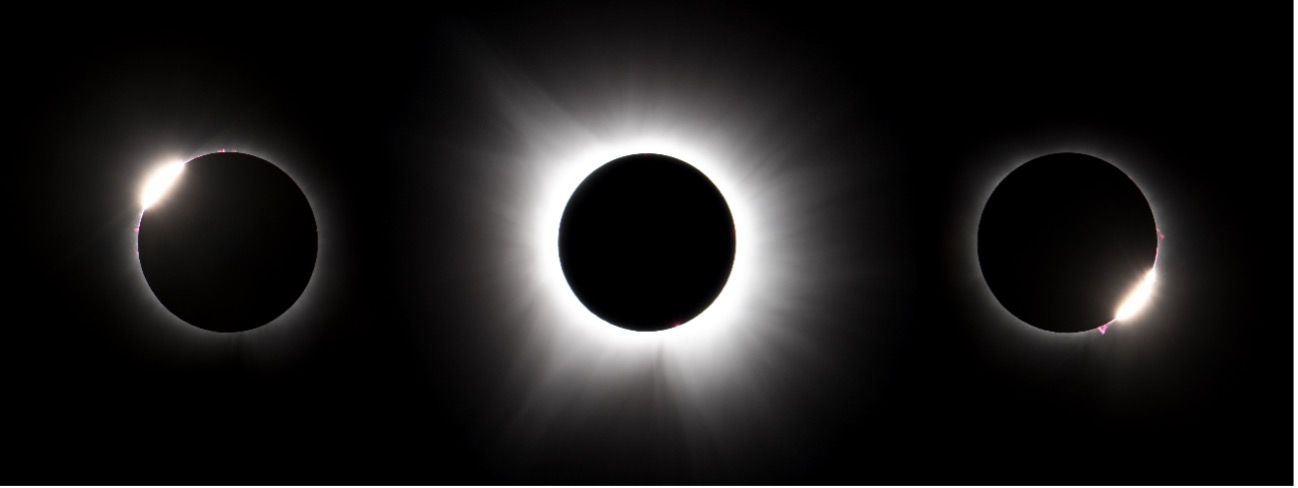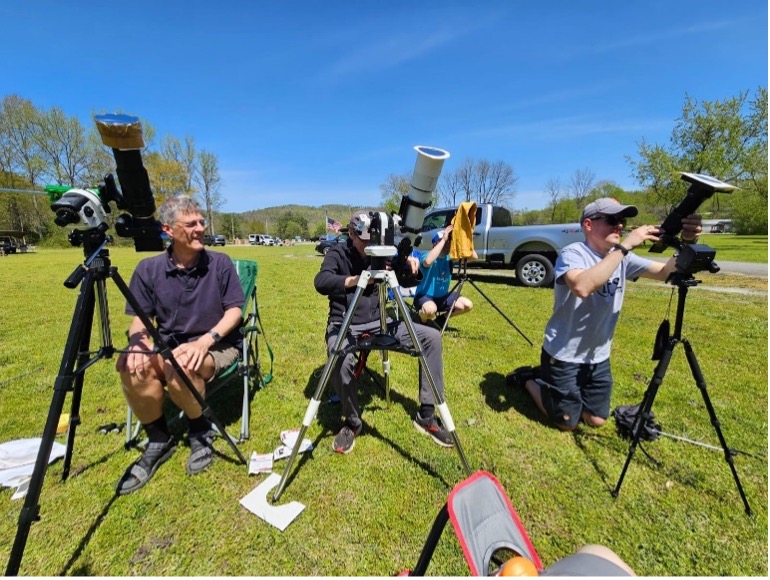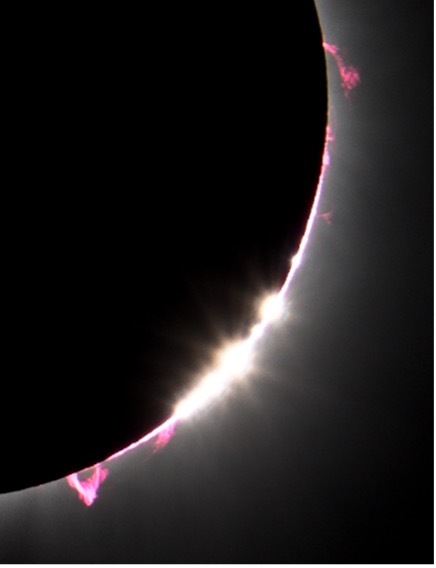Nature does the Best Experiments! Solar Eclipse of 8 April 2024 from Shirley, Arkansas
Although realized by few, total solar eclipses are one of the most unusual events that nature has to offer. An impression from the Laboratory for Multifunctional Ferroic Materials.

People sometimes ask me: „What part of physics fascinates you most?“, often adding: „I probably won‘t understand it anyway“, because they expect something inconprehensible like quantum mechanics, the Big Bang, or the vastness of a particle accelerator. When I tell them that what fascinates me most in physics is a total solar eclipse, they are surprised. „But everyone knows what a solar eclipse is!“ That is true, yet what few realize is how utterly, utterly unusual the event with our moon covering our sun is. To be clear, if there were many thousands of planets with intelligent life, aliens there would probably all know about Earth as „the planet with those odd solar eclipses“. Why is that?
Planets the size and solar distance as Earth do not commonly have moons. Even if they had one, it would not normally have the size of Earth‘s moon. It would be some small splinter that when it travels in front of its sun would barely reduce its brightness. Our moon, however, can cover the sun, and what really tops it off, it exactly covers the sun because in the sky the sun and the moon have the same size. There is absolutely no reason for this. It is sheer coincidence. But because of it, the moon blocks everything that is bright, bringing out all those usuallly invisible features of our sun for a few precious minutes.
Because of its sheer visual power and its extreme scientific unusualness I therefore try to watch an eclipse whenever it is reasonably accessible. This was last the case on 8 April 2024, when a total solar eclipse was visible in parts of Mexico, the US, and Canada. The best chances for a cloudless sky were in Texas at the border to Mexico. So the plan was to spend a few days with hiking and camping in Big Bend National Park and then approach the eclipse path from the side without the big cities (Dallas, Houston, San Antonio, etc.) and hence, hopefully, without traffic jams. A colleague from Göttingen and his friend, both hobby astronomers, joined — shared fun is definitely more fun.
Well, the weather is the biggest enemy to eclipses, and gradually the statistically best spot became in fact the worst spot with absolutely no clear sky to be expected at the Texas-Mexico border on Eclipse Day. Frantic studies of weather charts and cloud models rather revealed Arkansas as the most promising location in the US. So we decided for a spontaneous night drive, leaving Big Bend at 15.30 and arriving in Little Rock at 5.30. Quite an effort — but as a guy we talked to at Big Bend so appropriately said: „It’s all about dedication.“ The long trip left us a relaxed day to find a good viewing spot on the eclipse center line. The search brought us to a lovely campsite in Shirley in the Ozark Mountains, an enchanted spot radiating US country life in the 1960s before Walmart and suburban shopping malls killed community life. That is another interesting side effect of eclipses: you get to parts of the world you would normally never discover.

Then: April 8 — Eclipse Day! It begins with enjoying the beautiful environment and the blue sky, gradually getting into the mood of the event, setting up telecopes and cameras (see photo), sharing stories with fellow eclipse chasers. At 12.35 a dent in the solar disk sets off the spectacle. About 30 minutes later, first changes in the landscape become noticeable. A feeling like the power is sucked out of the day with the sunlight getting dimmer despite coming from above. The impression gets stronger and creates an otherworldly mood from about 15 minutes before totality. Shadows get unusually sharp, temperature drops, and sometimes (not this time) birds begin to sing. The last few minutes are dramatic because you can see the brightness of the day dropping while you watch. It gets duskier and duskier, and at some point you think: „It cannot possibly get darker — there is nothing left“, and it is still a minute from totality. During the last few seconds, sun looks like a diamond ring. A soft, bright circumference and a tiny last speck of full solar intensity (photo). Then it is gone. At 13.52 day has turned into night, and in the steel-blue sky you see a black sun surrounded by an ethereous haze of light — the corona (photo). The impression is absolutely stunning, sending shivers down the spine and shaking people up emotionally to the point that sometimes tears begin to flow. It is not completely dark — but dark enough to see the first stars coming out.
All solar eclipses have their own personality. This year, sun is passing through an activity peak, and so the corona is unusually intense, and many oddly Barbie-pink flares are visible around the blackened sun (photos). After 4:15 precious minutes a faint glare indicates the return of the sun. When the first speck appears in a reverse diamond ring (photo), the world immediately brightens up, and gives a shocking demonstration of sun‘s power — a small dot of light illuminating the entire world. The dot evolves into a series of „Baily’s Beads“ — speckles along a section of the moon’s circumference, where the sunlight shines through the lunar valleys (photo). In the following 76 minutes, the sun gradually returns to its normal strength.

Although there is now a flood of photos and Youtube videos on each eclipse, none of these can appropriately reproduce how a solar eclipse truly looks and feels. Sun at totality covers ten orders of magnitude in brightness. No recording medium can capture that, but the human eye does. And nothing can recreate the three-dimensional experience of it all. So go and watch a total solar eclipse for yourself, at least once in your lifetime. Go to Aragon in 2026 where an eclipse is visible towards sunset, or go to Luxor in 2027 where you can experience the longest one of the century. In fact, the 2020s are the Golden Decade of eclipses, featuring four long or unusual ones in readily accessible places.
Manfred Fiebig
